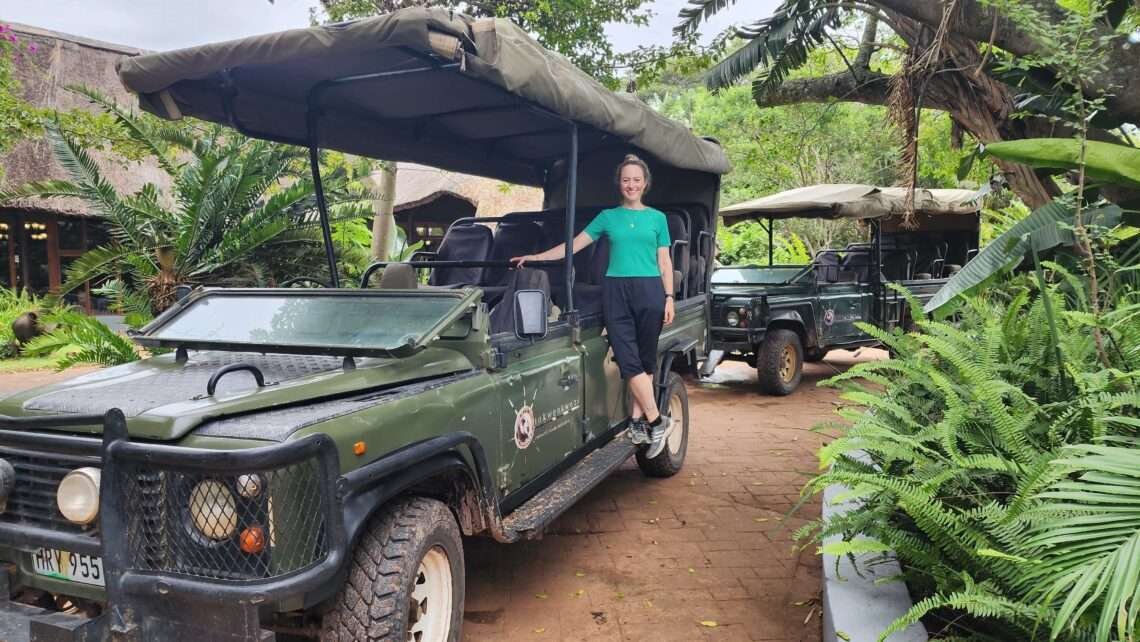
Inkwenkwezi Game Drive: Explore the beauty of the reserve
Rooted in the Xhosa language, the name ‘Inkwenkwezi’ beautifully translates to ‘under the stars.’ This large private reserve, spanning about 4500 hectares, is a home for many plants and animals. In addition to various antelope, the reserve is proud to host four of the famous “Big Five” animals: leopard, buffalo, rhino, and lion. Bird enthusiasts will revel in the paradise of 286 identified bird species within the reserve. Inkwenkwezi also has rare white lions, which stand as yet another testament to the reserve’s unwavering dedication to conservation efforts. The best way to see all these animals, and more, is with an Inkwenkwezi Game Drive.
To experience the diverse wildlife, Inkwenkwezi offers exciting game drives for both overnight guests and day visitors. While these guided trips on open 4×4 vehicles navigate bumpy terrain, it gives the journey a sense of real adventure. During the drive, you not only get to see many of the reserve’s animals but also learn interesting facts about the plants and wildlife that call the reserve home.
An Exciting Inkwenkwezi Game Drive
Exploring the surrounding bush on an open wildlife viewing vehicle is both enjoyable and exhilarating. There’s always an element of surprise at every turn, as you just never know what you might stumble across.
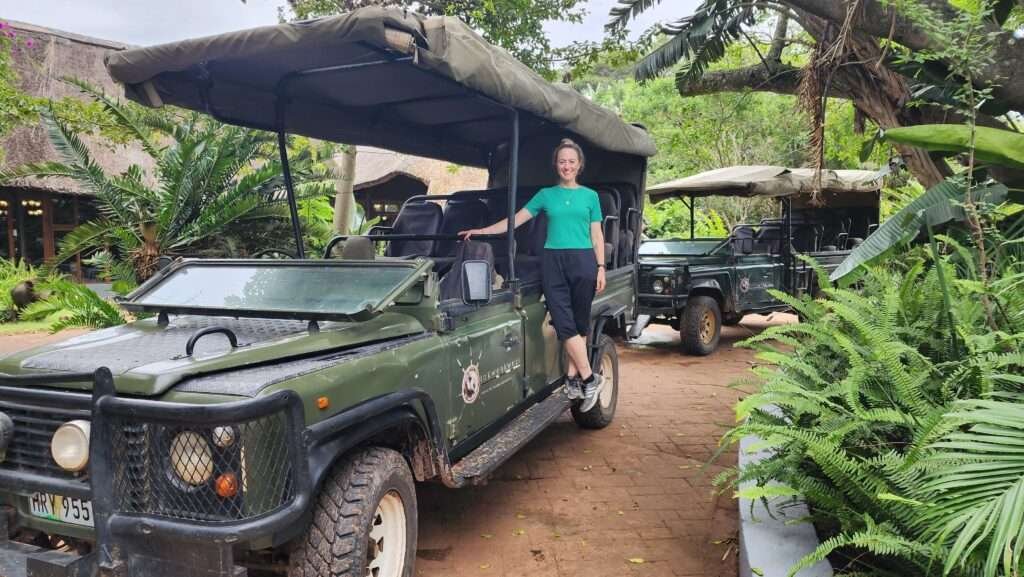
Unlike the regular roads in many wildlife reserves, Inkwenkwezi gives you a special ‘off-road’ adventure. The bumpy paths, crossing rivers, and going up and down hills make the drive exciting, though.

Our day started with seeing a Vervet monkey, a cute African primate. Even though they can sometimes be troublemakers by stealing food and raiding crops, their adorable faces and funny actions make them a favorite sight in the African bush.
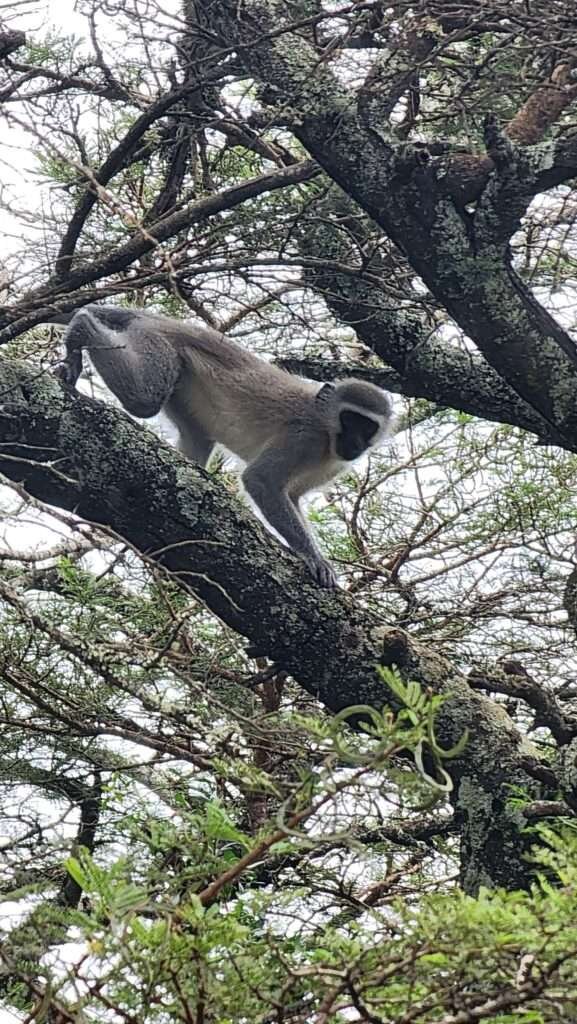
A special plant at Inkwenkwezi
As we kept driving, we stopped at a plant known as Sisal, or Agave sisalana. Sisal is originally from Southern Mexico and is well-known for producing strong fibers.
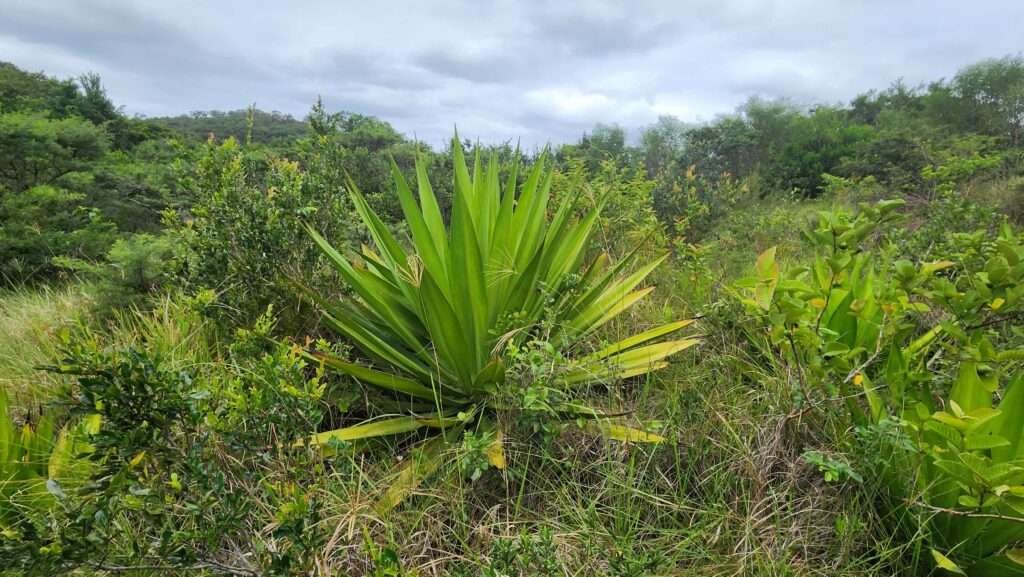
To highlight the impressive features of this fiber, our guide pulled a strand from the plant.

The sisal fiber is often utilized in crafting ropes and twines, but its versatility extends to various other applications. It finds uses in making paper, fabric, footwear, hats, bags, carpets, geotextiles, and dartboards. Moreover, sisal fibers are used to strengthen materials such as composite fiberglass, rubber, and concrete products.
After everyone had a chance to examine the fiber closely, our driver suddenly took a detour. In the distance, we spotted two giraffes standing tall above the nearby vegetation. Their inquisitive gaze followed our approach.
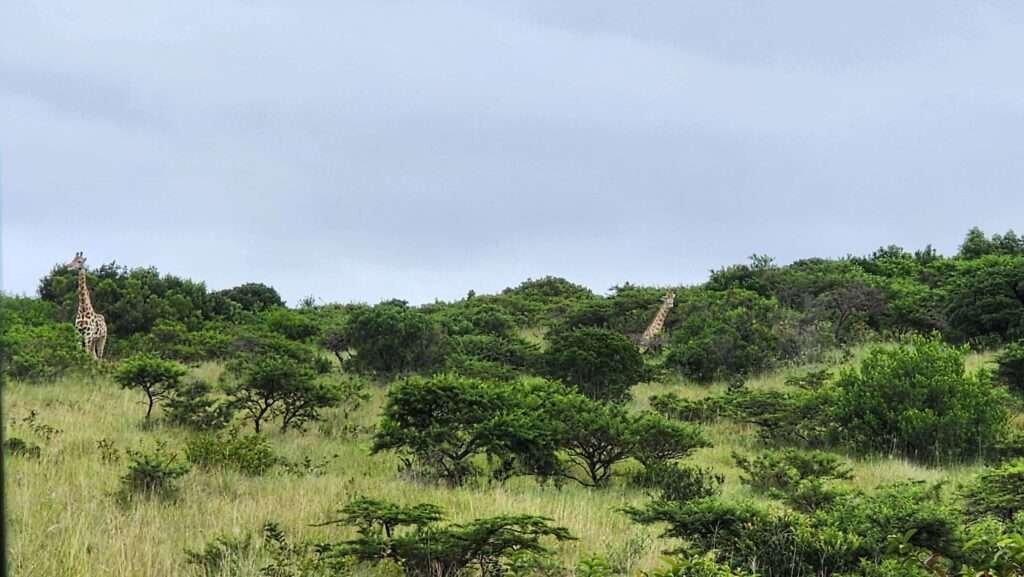
Discovering Clues of White Rhino at Inkwenkwezi
Inkwenkwezi is home to several white rhinos on the reserve. Although we didn’t get to see these magnificent animals up close, we came across compelling proof of their presence. Our guide stopped the vehicle to show us a clear rhino footprint in the muddy ground.
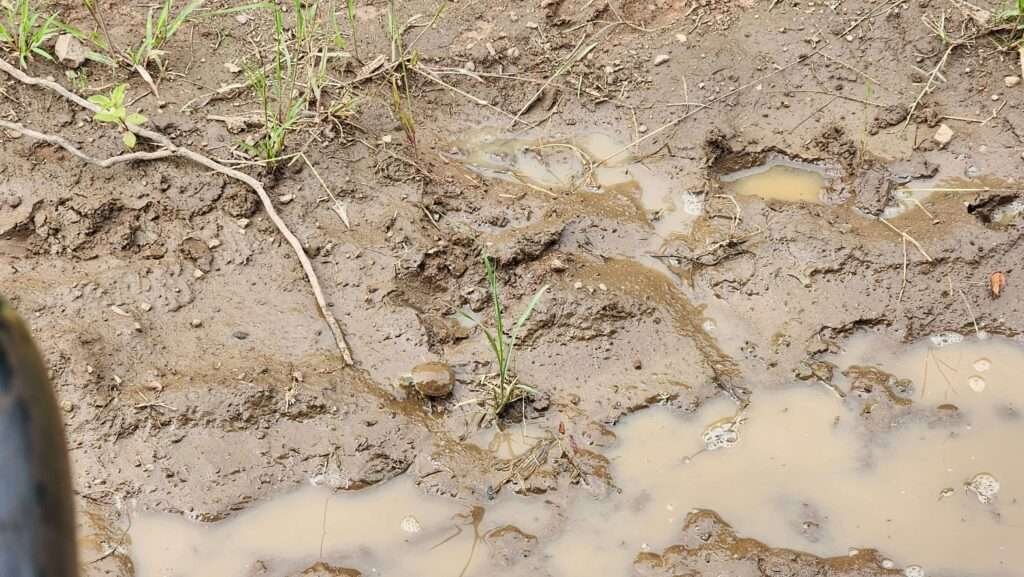
The Architectural Marvel of Ants at Inkwenkwezi
As we kept exploring, we stumbled upon something quite fascinating. A large hanging nest turned out to be a complex structure skillfully crafted by hardworking ants! These industrious ants build their nests by weaving leaves together with silk produced by their larvae. These nests serve as a safe home, offering protection for the ant colony from predators and bad weather. It was interesting to learn more about the incredible abilities of these tiny creatures.
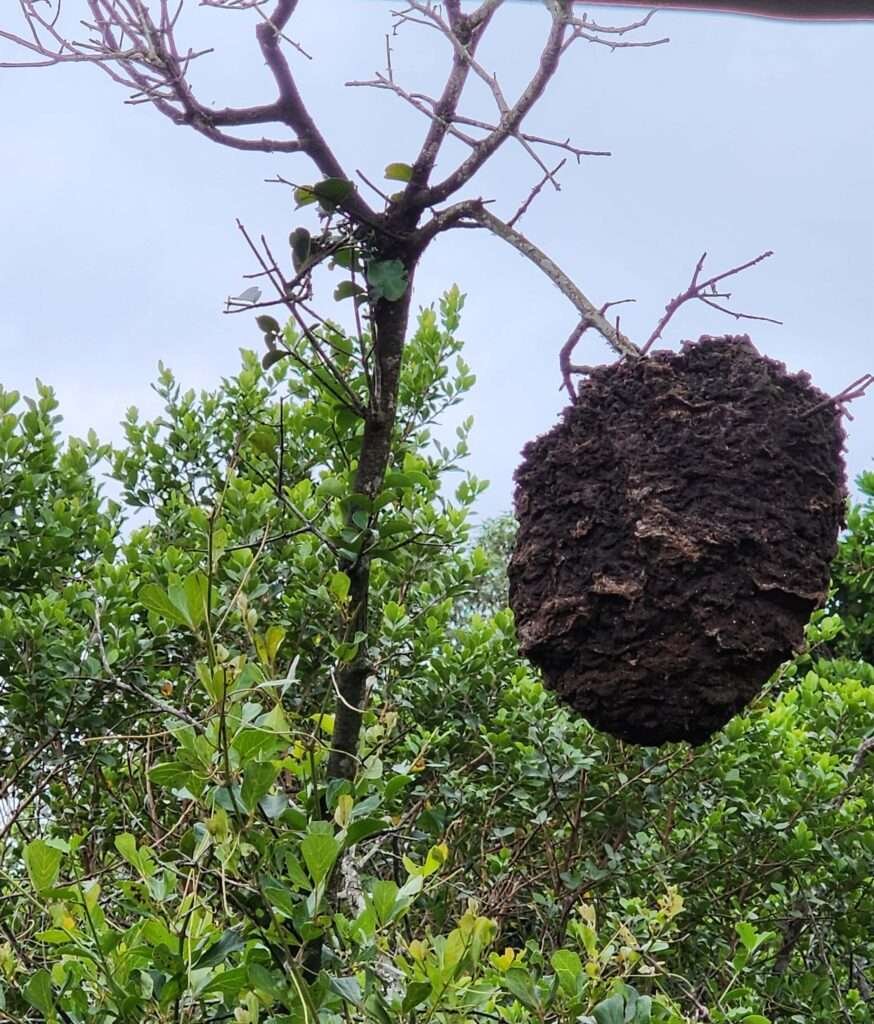
The Antelope Species of Inkwenkwezi
Next up on our wildlife adventure were the Impalas. These medium-sized antelopes are known for their elegance and quick moves. They have a reddish-brown coat with white underbellies, and both males and females have slim, lyre-shaped horns, with the males having bigger ones. One interesting thing about impalas is the dark “M” marking on their back, above the tail, which helps tell them apart, especially when they’re in a group. With a sleek body built for speed, these animals are great at dodging predators.

Not too far away, we were lucky to see Blesbok, another pretty antelope from South Africa. What makes them stand out is the big white mark on their forehead that goes down their face. Their dark brown to reddish-brown coat is a bit lighter underneath. Both males and females have curved horns, but the males’ horns are bigger and thicker, around 40-50 cm long. We also saw a zebra nearby, just munching on grass, not paying much attention to us watching from a distance.
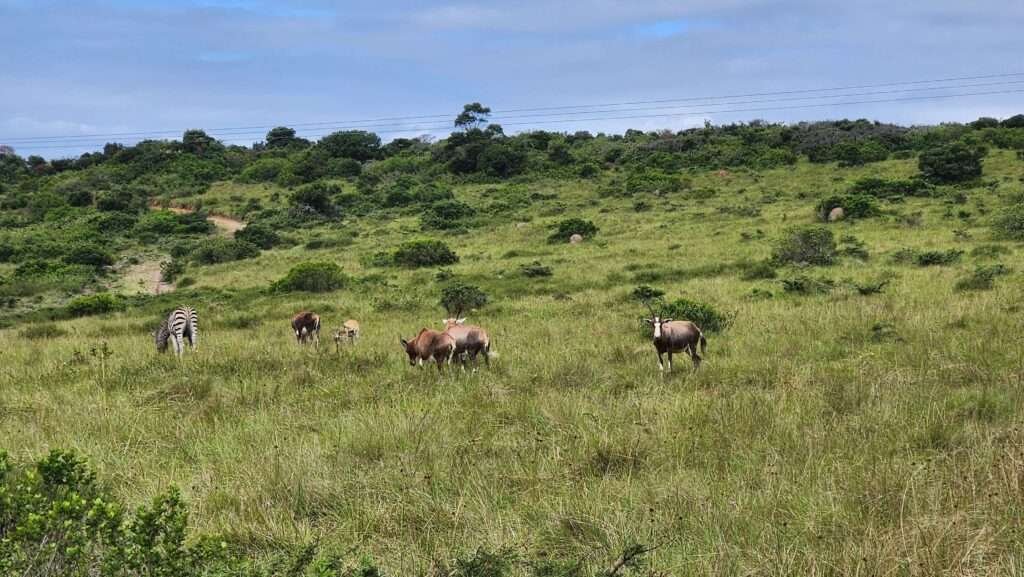
.
The White Lion of Inkwenkwezi
The lion reserve is a fenced-off space covering 100 hectares (equal to 1 square kilometer) within Inkwenkwezi Reserve. Lately, a few lions have been acting mischievously, prompting us to take precautions. For safety reasons, we had to retrieve a pistol stored in a secure safe at the entrance.
It didn’t take us much time to come across a group of lions, including two females and one male lion. Lying lazily in the grass, the lions casually raised their heads to watch our approaching vehicle.



The White Lion Breeding Program
In Inkwenkwezi, one can find both tawny and white lions, all of which possess the recessive “white lion gene.” Despite common misconceptions of being albino, the white lions at Inkwenkwezi actually exhibit an incredibly rare recessive genetic mutation called ‘leucism’. As a result, their fur appears significantly lighter in color, resembling shades of white or blonde, in contrast to the typical tawny hue of lions.
Unfortunately, the striking white fur of these lions made them vulnerable to hunters. During the 1970s, they were captured and displayed in zoos, sparking worries about the possible extinction of the white lion gene. However, a ray of hope appeared in 2006 when white lions were born in Timbavati and nearby reserves in northern South Africa. This confirmed that the gene naturally persists in the wild, renewing our appreciation for the resilience and ongoing existence of these lions.
It’s really important to protect these special lions. In Inkwenkwezi Reserve, they’re actively involved in a breeding program. This program focuses on increasing the number of white lions and their gene pool in their natural home. Working together with other projects across South Africa, the goal is to boost the lion population. With everyone pitching in, there’s hope for a better future for these lions, making sure they stick around for many generations.
A Magnificent Bird Sighting on the Inkwenkwezi Game Drive
As the drive nears its end, the final stretch takes you through a grassland region.

We were really lucky to spot an African fish eagle proudly sitting in a tree. Its standout features include a bright white front and a vibrant yellow beak. Interestingly, this impressive bird is the national bird in four African countries: Malawi, Namibia, Zambia, and Zimbabwe. It’s quite easy to identify because it looks a bit like the North American Bald Eagle.
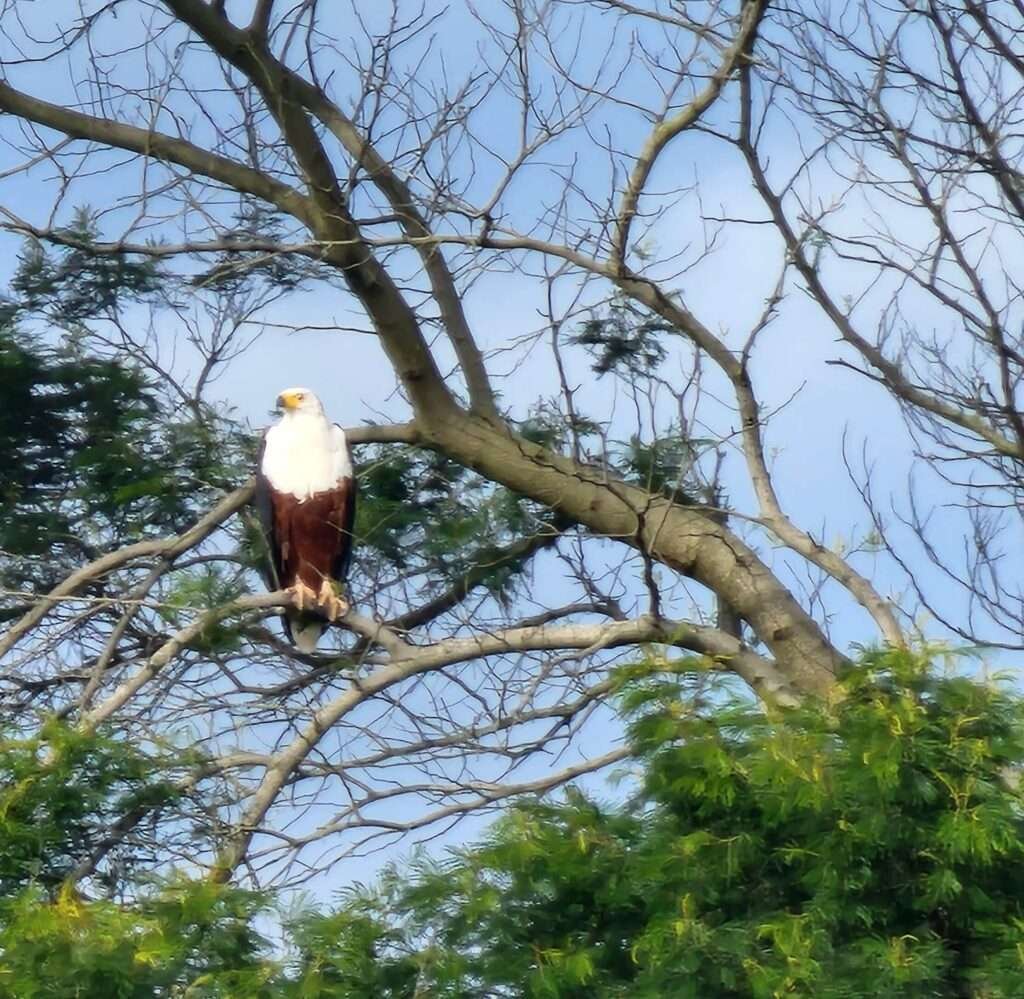
As the sun began to set, casting a warm glow across the sky, we reluctantly wrapped up our Inkwenkwezi game drive and headed back to the main camp. As we got ready to leave, we took with us more than just photographs — a deep appreciation for the delicate balance of life and the significance of preserving these precious habitats. To sum up, I encourage everyone to visit Inkwenkwezi, where a stunning landscape, wildlife, and a tranquil atmosphere effortlessly come together.

Duration and cost of the Inkwenkwezi Game Drive
You have the flexibility to enjoy game viewing during either the morning or afternoon game drive. Drives are for approximately 3 hours and also include a visit to the lion enclosure and a refreshing drink stop. The cost is R675 for South African citizens and R895 for International guests. If you want to stay updated with Inkwenkwezi’s latest offerings and ongoing specials, follow their Facebook page.
Top Tip: If you visit on a Sunday, you can incorporate the drive with the Sunday buffet. Trust me, you don’t want to miss it. Keep an eye on Inkwenkwezi’s facebook page for special deals.
Contact Information & Reservation for Inkwenkwezi Game Drive
For reservations and enquiries, contact Inkwenkwezi at one of the following:
- Email: pgr@inkwenkwezi.co.za
- Telephone: +27 (043) 734 3234
Where to find Inkwenkwezi Private Reserve
- Address: Inkwenkwezi Private Game Reserve, Schafli Road, East Coast, East London
- For precise directions on Google Maps, please follow this link: GOOGLE MAP DIRECTIONS
Umtiza Forest Walk at Inkwenkwezi: What to Expect
Inkwenkwezi Restaurant: An Irresistable Sunday Buffet Spread
Inkwenkwezi Reserve: How to spend one day


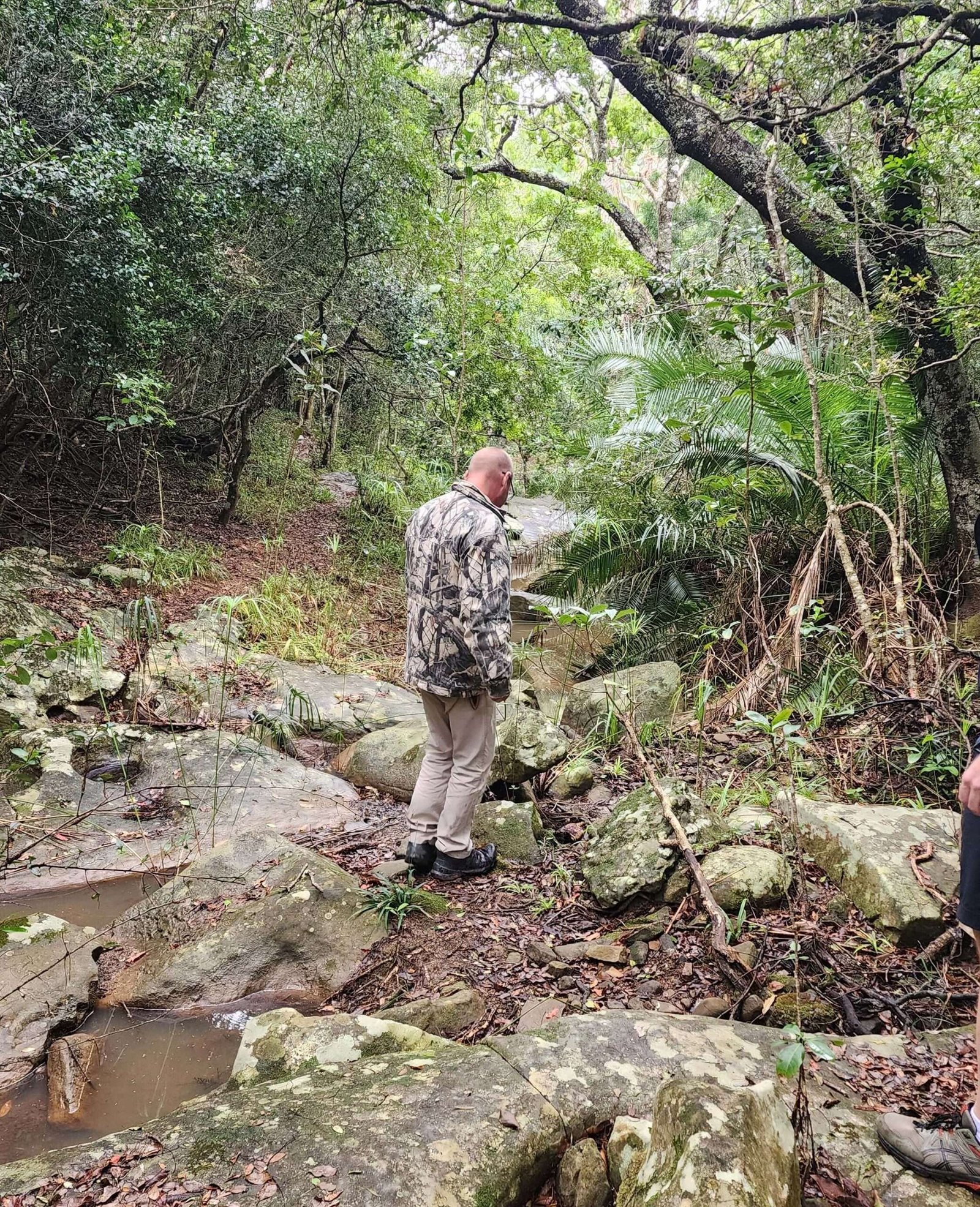

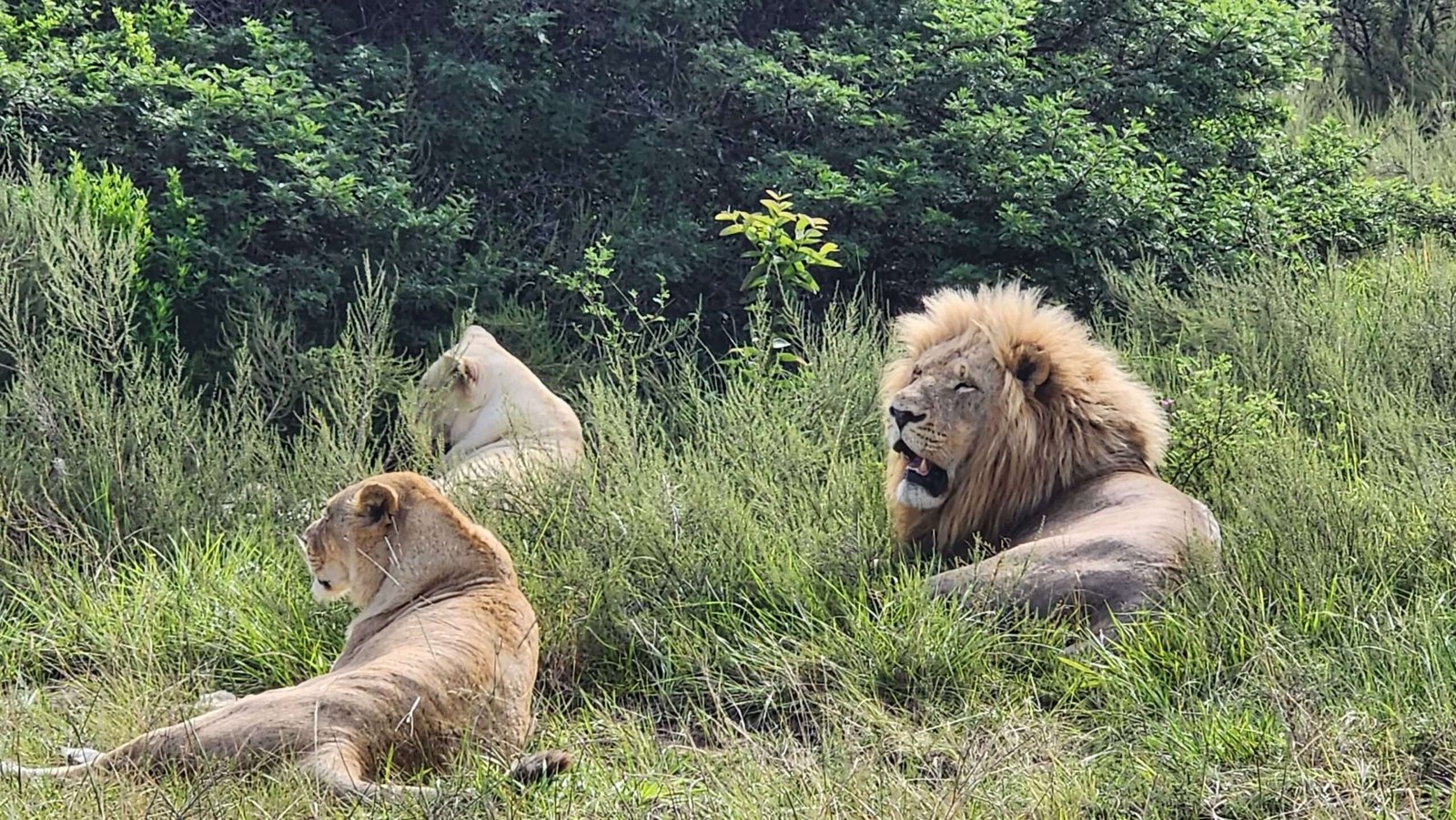
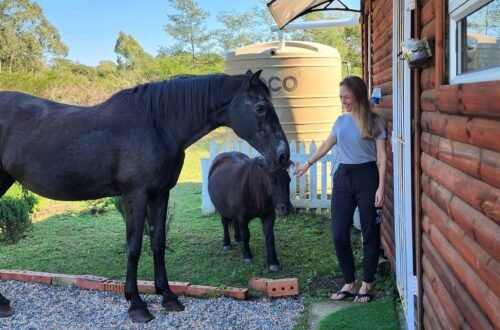
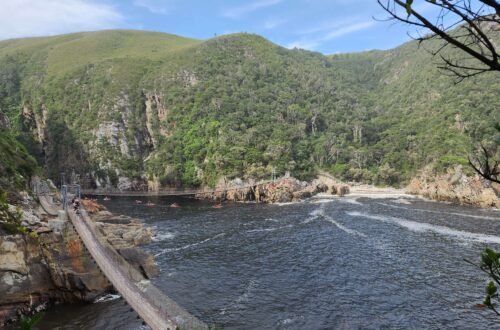

One Comment
Beulah Thomas
What are you nightly rates and what does it include. Also what are your charges and services for day trippers